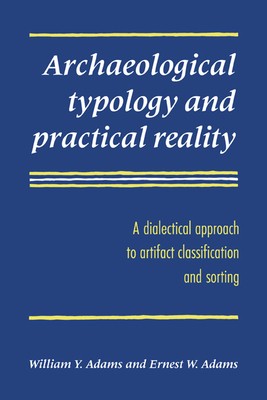
- We will send in 10–14 business days.
- Author: William Y Adams
- Publisher: Cambridge University Press
- ISBN-10: 0521048672
- ISBN-13: 9780521048675
- Format: 15.2 x 22.9 x 2.6 cm, softcover
- Language: English
- SAVE -10% with code: EXTRA
Reviews
Description
Classifications are central to archaeology. Yet the theoretical literature on the subject, both in archaeology and the philosophy of science, bears very little relationship to what actually occurs in practice. This problem has long interested William Adams, a field archaeologist, and Ernest Adams, a philosopher of science, who describe their book as an ethnography of archaeological classification. It is a study of the various ways in which field archaeologists set about making and using classifications to meet a variety of practical needs. The authors first discuss how humans form concepts. They then describe and analyse in detail a specific example of an archaeological classification, and go on to consider what theoretical generalizations can be derived from the study of actual in-use classifications. Throughout the book, they stress the importance of having a clearly defined purpose and practical procedures when developing and applying classifications.
EXTRA 10 % discount with code: EXTRA
The promotion ends in 20d.04:35:30
The discount code is valid when purchasing from 10 €. Discounts do not stack.
- Author: William Y Adams
- Publisher: Cambridge University Press
- ISBN-10: 0521048672
- ISBN-13: 9780521048675
- Format: 15.2 x 22.9 x 2.6 cm, softcover
- Language: English English
Classifications are central to archaeology. Yet the theoretical literature on the subject, both in archaeology and the philosophy of science, bears very little relationship to what actually occurs in practice. This problem has long interested William Adams, a field archaeologist, and Ernest Adams, a philosopher of science, who describe their book as an ethnography of archaeological classification. It is a study of the various ways in which field archaeologists set about making and using classifications to meet a variety of practical needs. The authors first discuss how humans form concepts. They then describe and analyse in detail a specific example of an archaeological classification, and go on to consider what theoretical generalizations can be derived from the study of actual in-use classifications. Throughout the book, they stress the importance of having a clearly defined purpose and practical procedures when developing and applying classifications.


Reviews